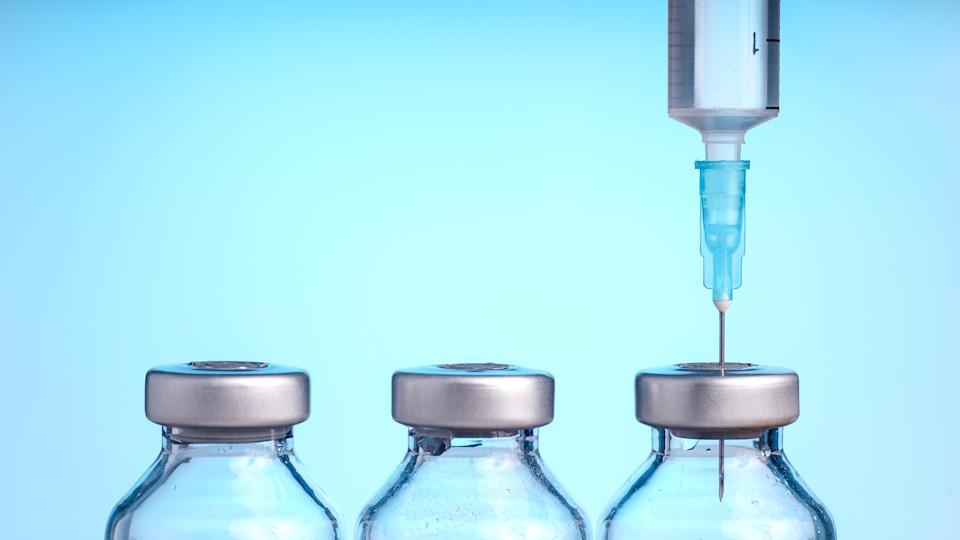Bioprinting organs and the future of healthcare

The artificial creation of human skin, tissue and internal organs may sound like something from the distant future, but much of it is happening right now in research facilities around the globe and providing new options for treatment.
Every ten minutes, someone is added to the national transplant waiting list in the US alone, where on average 20 people die each day while waiting for a transplant. The shortage of organ donors is not just confined to the US and scientists are turning to technology for help against this worldwide issue.
Bioprinting might sound futuristic, however, it has a potential to be the next big thing in healthcare and
many researchers hope that, within around two decades, transplant waiting lists will be thing of the distant past. The hope is that printing and transplanting an organ will take a few hours without any risk of rejection from the body. These printed organs would be created from the very cells of the body they will re-enter, matching the exact size, specifications and requirements of each individual patient.
Basics of 3D printing
The traditional printers we see every day in our offices and homes can print text or images on a flat surface only in two dimensions. 3D printers add depth as a third dimension allowing the cartridges to move up and down, left and right, and backwards and forwards. Crucially, 3D printers can also use materials that include polymers, metal, ceramics and even edible materials. The process of printing or rather developing a 3D item is known as additive manufacturing.
But before the machine will be able to cope with three dimensions, the object must be digitised using modelling software, then the chosen material has to be loaded onto the cartridge and heated to be able to flow through the printer’s nozzle. The additive manufacturing starts by depositing successive layers of printing medium to produce the final product. This technique allows it to create nearly any shape.
What is bioprinting?
Bioprinters work on the same concept as 3D printers. The key difference between the two is that bioprinters deposit layers of biomaterial instead, which may include living cells, to build complex structures like blood vessels or skin tissue. To do this the required cells are taken from the patient and then cultivated until there are enough to create the bio-ink, which is then loaded into the printer.
Most bioprinters also deliver organic or synthetic dissolvable gel, which acts as a support to which cells can attach to and grow. This allows them to stabilise into the correct form. However, some cells can assume the correct positioning by themselves with no extra support.
They then use their own inherent properties to seek similar cells to join with, knowing where they are needed, in exactly the same way as cells in an embryo develop in the womb. Scientists are also able to control the shape using the printer and building the final structure.
Because this technology is relatively new, there are several different printers undergoing testing, and therefore methods for delivering these cells and biomaterials differ. Some of the more commonly used methods of bioprinting include extrusion, laser, microvalves, inkjet and tissue fragment printing.
Researchers predict that the final printer will be the combination of several of these techniques that will provide the most significant advancements in bioprinting.
How close are we to bioprinting internal organs?
Today’s technology is not yet sophisticated enough to bioprint complex human organs, however, developing less complex organs is already possible. Researchers at the Wake Forest University in North California extracted cells from a patient’s poorly functioning bladder and cultivated them with added nutrients. A 3D mould of the patient’s bladder was then bioprinted and soaked with cultivated cells. The mould was placed in an incubator and was able to be transplanted into the patient’s body. The bioprinted support will eventually break down, leaving only the organic material behind.
In October 2016, Harvard researchers 3D-printed the world's first heart-on-a-chip with integrated sensors. The device, which is a micro-physiological system, mimics the behavior of human tissue and is the most sophisticated of the chip-based organs built by the team.
Biotech 3D printing startup BioLife4D has just a month ago successfully produced human tissue in the form of a cardiac patch, bringing it one step closer to printing organs viable for transplant. BioLife4D stated that the cardiac patch, created at a research facility in Houston, is derived from a patient’s white blood cells and contains multiple cell types included in the human heart.
The ability to bioprint human cardiac tissue provides a “clear and rapid pathway towards bioprinting human hearts”, said Ravi Birla, BioLife4D’s chief science officer in a press release. The next steps will involve constructing parts such as valves, blood vessels and a mini-heart. The company hopes that by using the patient’s own white blood cells, it can eventually create a human heart that can be transplanted.
“What we’re talking about doing will solve the problem of supply and enable people on waiting lists to get hearts,” said Steven Morris, founder of BioLife4D. “Unlike a lot of other things that happen with medical advancements, this will be a win-win for everybody.”
Why is bioprinting taking so long?
At present, the bioprinting of fully functional complex internal organs, such as hearts, kidneys and livers, is still at least 10 years away, possibly more, but advancements are occurring at a very rapid rate.
A complex network of cells, tissues, nerves and structures in a human organ need to be correctly positioned with a highest precision for it to function properly. From arranging the thousands of tiny capillaries in a liver, to printing a heart that beats, it is a long, difficult process.
While some parts of the human body are more complex than others, each piece has its own specialised requirements and issues that need addressing. The selection of the right materials, cell types and bio-inks must be as precise as the blueprint itself.
Moreover, working through all these complexities requires the integration and input of many advanced technologies from several fields, including engineering, biomaterials science, cell biology, physics and medicine.
Despite all of these complexities, bioprinting is accelerating at a massive rate. But although it is very exciting times for the field, we need to be careful to offset expectations against reality. Those working in the field are making advances every day, in both the technology and in their understanding of how it can be used. While we’re not quite there yet, there is no doubt that the future of healthcare and medicine will be very different thanks to bioprinting.











